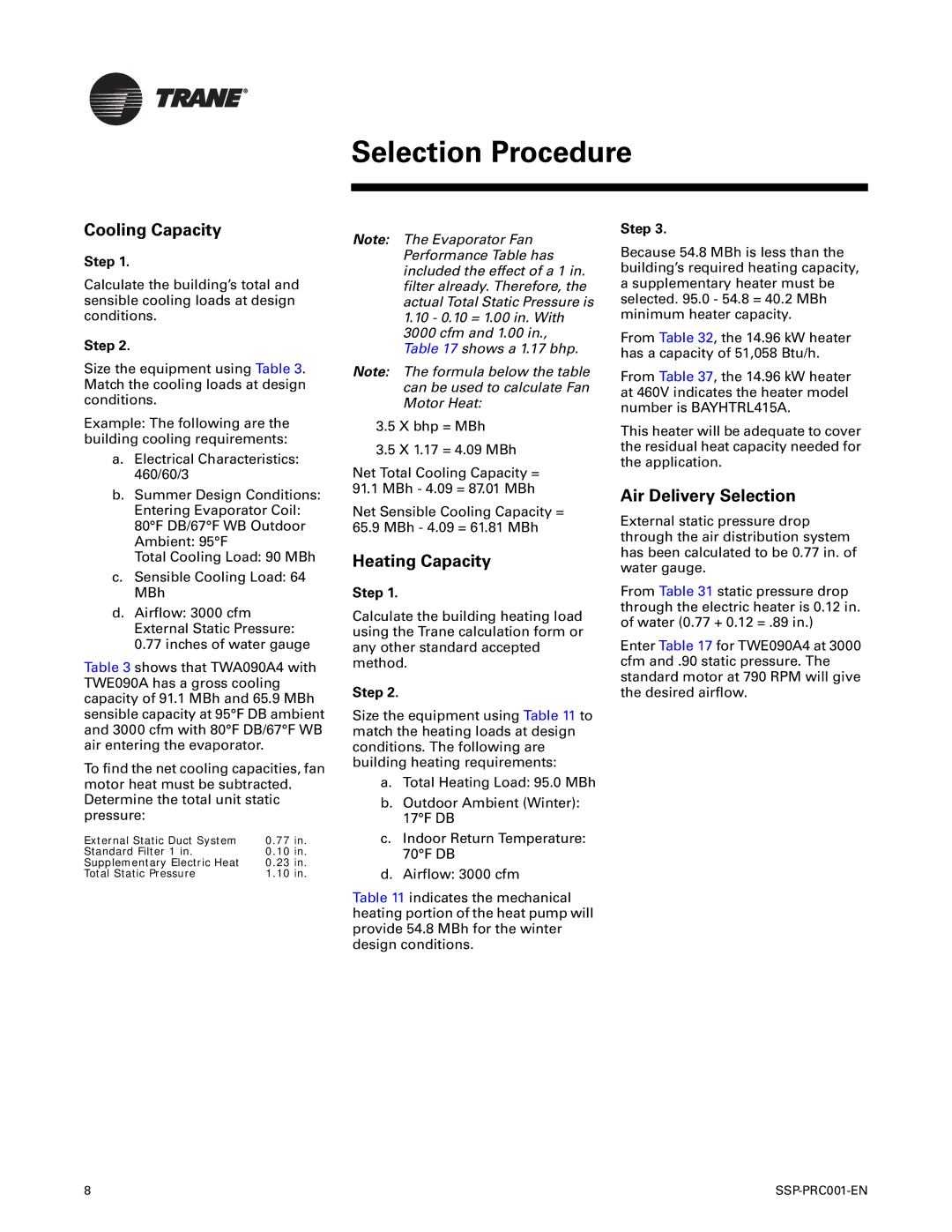SSP-PRC001-EN specifications
The Trane SSP-PRC001-EN is a state-of-the-art product designed to enhance the efficiency and performance of HVAC systems. As a part of Trane’s expanding suite of smart building technologies, this device integrates advanced features and cutting-edge technology to provide optimal climate control for various applications, including commercial and industrial settings.One of the primary features of the SSP-PRC001-EN is its ability to monitor and manage energy consumption effectively. The device employs real-time data analytics to provide insights into energy use patterns, allowing facility managers to make informed decisions that can significantly reduce operational costs. By leveraging this information, organizations can optimize their HVAC operations, leading to enhanced sustainability and compliance with environmental regulations.
Another notable characteristic of the SSP-PRC001-EN is its integration with Trane’s smart building technology. The system is designed to seamlessly connect with various sensors and building management systems, creating a comprehensive ecosystem for energy management. Its compatibility with existing infrastructure means that users can upgrade their systems without the need for extensive retrofitting, minimizing disruption while maximizing efficiency.
The SSP-PRC001-EN also boasts user-friendly interfaces that simplify operation and monitoring. Facility managers can easily access data and analytics through intuitive dashboards, which can be customized to display the most relevant information. This ease of use is critical for timely decision-making, especially in environments where rapid response to changing conditions is essential.
In terms of reliability and performance, the SSP-PRC001-EN is built to withstand demanding conditions. Designed with durability in mind, its rugged construction ensures long-lasting service, making it an ideal choice for facilities operating in various environments. Moreover, the system is engineered for flexibility, allowing for adjustments based on specific operational needs.
Overall, the Trane SSP-PRC001-EN combines advanced technology with practical features to deliver an efficient, reliable, and user-friendly solution for HVAC management. Whether for upgrading existing systems or integrating into new buildings, it stands as a testament to Trane's commitment to innovation and sustainability in the realm of climate control solutions. This product exemplifies how technological advancements can contribute to smarter building management and energy efficiency in today's demanding operational landscapes.

